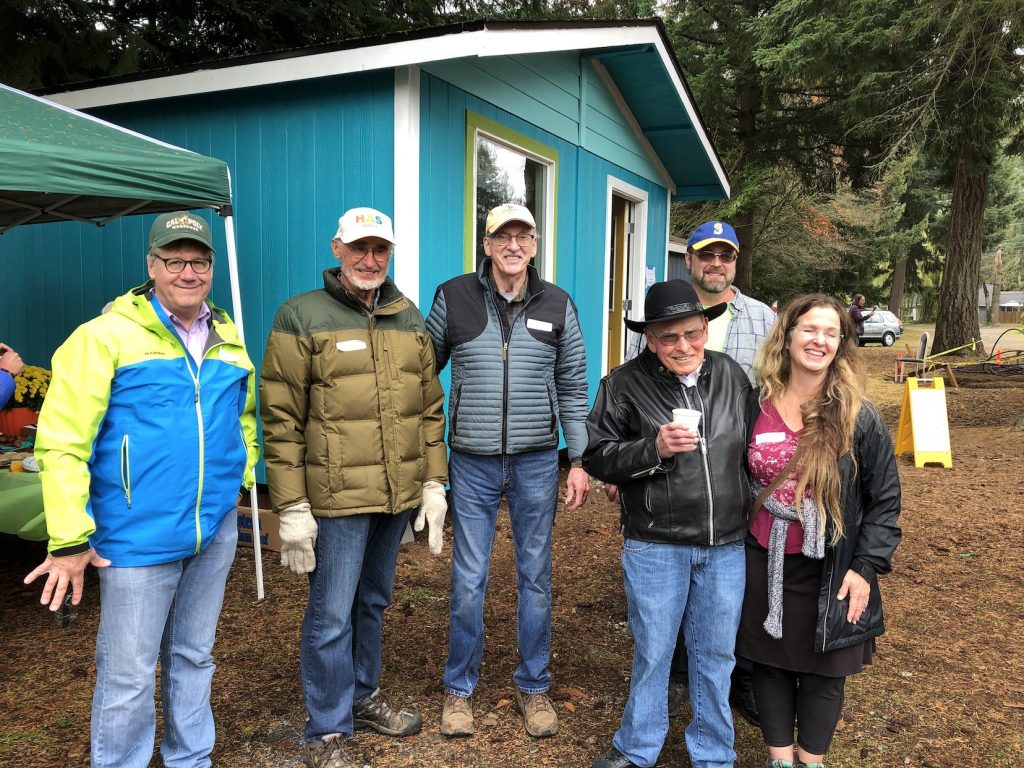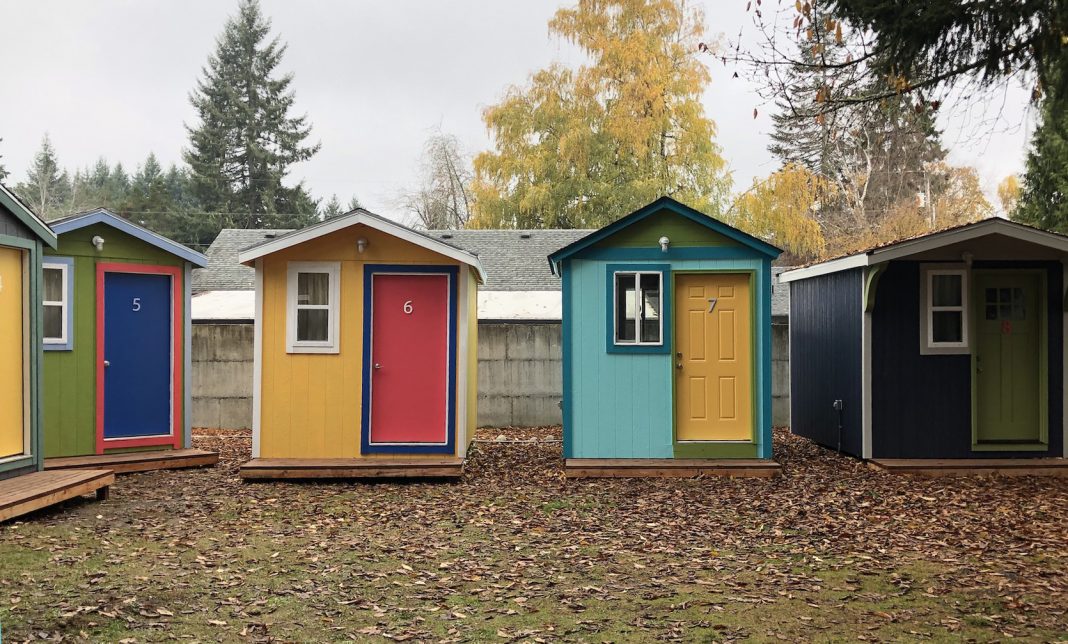A few days before Thanksgiving, eight guests will move into their own tiny transitional home in Hope Village on the campus of Westminster Presbyterian Church on Boulevard Road and 18th Avenue in Olympia. These new resident guests will join members of the congregation for a Thanksgiving meal that will mark a time of true thanksgiving and the beginning of community fellowship for Hope Village residents.
 During their time in the village, residents will hear the story told and retold by a myriad of individuals and members of communities that collaborated over the past year to create Hope Village. As many projects do, the village began with a meeting about a year ago at Evergreen Christian Center where over 150 individuals gathered to learn more about the opportunities for faith communities to work with city governments to create tiny home villages.
During their time in the village, residents will hear the story told and retold by a myriad of individuals and members of communities that collaborated over the past year to create Hope Village. As many projects do, the village began with a meeting about a year ago at Evergreen Christian Center where over 150 individuals gathered to learn more about the opportunities for faith communities to work with city governments to create tiny home villages.
Mike Rush, who organized the meeting, explained, “My wife and I had moved to Olympia a couple of years ago, and since I had worked with the tiny house projects in Austin, Texas, I was hoping to get involved here.”
That fall 2018 meeting facilitated the formation of FAITH Alliance of Olympia, which continues to be a very active promoter of the tiny house movement.
The FAITH Alliance task force immediately began working with the City of Olympia to begin its pilot partnership to help identify the city requirements for tiny house facilities and develop resources to support faith communities interested in tiny house projects.
Nancy Nelson, a member of the Westminster Congregation, who Rev. Therin Fenner called the project’s chief instigator, said, “That initial meeting at Evergreen Christian sparked so much enthusiasm that it was contagious. If we hit a roadblock, we worked around it and moved forward at a record pace.”
It was so contagious that four local congregations: Westwood Baptist Church, Olympia Unitarian Universalist Congregation, United Churches of Olympia, and First United Methodist Church of Olympia began building tiny houses for Hope Village. In addition, Peace Lutheran Church in Kent donated two tiny homes built at the Cedar Creek Correction Center. The City of Olympia partnered with the Low-Income Housing Institute (LOHI) in Seattle, and that organization provided the final house. The Westminster Congregation built the double house that serve as the community center and kitchen. The tremendous response from so many communities shows how a large “village” of volunteers can build a beautiful small Hope Village in just over a year.

On a chilly Saturday in early November, visitors and volunteers gathered for an open house to showcase the progress being made at Hope Village. All of the houses had been delivered and arranged on the site. When I visited that day, Frank Sanborn, who is working on the electricity for the site, explained, “The city required a new electrical grid to accommodate the village, and the installation is still a work in progress, but moving toward completion.”
Each house will have an electrical outlet and a small heater. Since the houses must be movable, no plumbing is installed. The City of Olympia will provide and service two portable toilets and a washing station. With no available space at Westminster for a washer and dryer, volunteers will work with guests to provide that service.
Nancy Nelson is very happy they are moving on to the next phrase of the project, which is interviewing prospective residents. When I asked how they had chosen people to interview, Nancy responded, “I have worked with several organizations in town: Sidewalk, Safe Place, the Senior Center, the Union Gospel Mission, so I reached out to those organizations for recommendations. Sarah from LOHI and I have been interviewing, and once background checks have been completed, we may have our first group of guests to invite.”
The people they have interviewed are a blend of men and women who range in age from 18 to 65, so it will be an eclectic community, Nancy believes. She said, “Currently one of the potential guests is sleeping at Drexel House and another on a sheet of cardboard on a sidewalk.” One person interviewed has secured a full-time job since the interview, so Nancy says, “She may only be with us a few months.”
The goal of Hope Village is to provide that transition time for guests to find good jobs and have the means to acquire permanent housing. James Fett, a member of the Steering Committee, echoes the sentiments of so many who have worked on this project, “It has been a great year. For me, at age 85, it has been ‘The Year of the Tiny House.’”
All who have collaborated on this project aspire to make every year the Year of the Tiny House, with Hope Village serving as a model.
















































